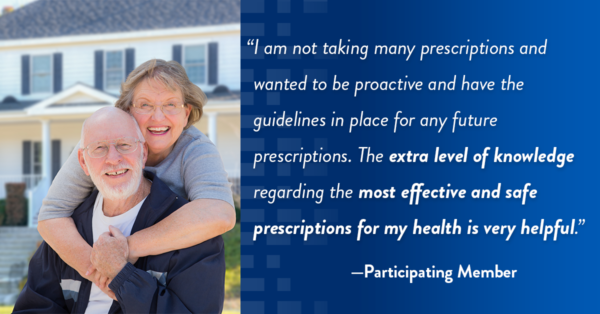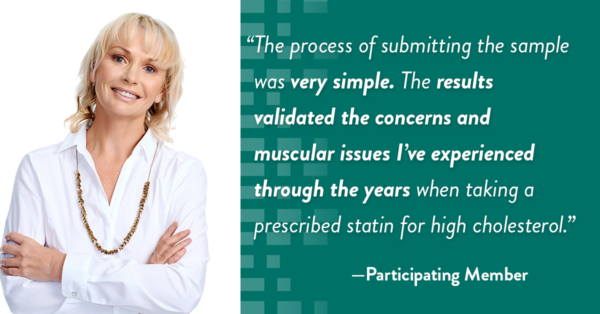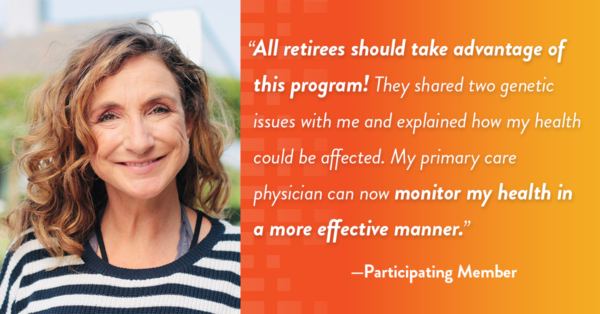The Teachers’ Retirement System of the State of Kentucky
Medication Safety Program Case Study

About the Teachers’ Retirement System of the State of Kentucky
This state-run pension program initially covered approximately 33,000 retired teachers ranging in age from 62 to 107. At 65, their members took an average of 15 prescription medications per year – in addition to over-the-counter medicines, vitamins, and supplements. That’s a lot of copays and a lot of potential for side effects, adverse drug reactions, drug-drug interactions, and drug-gene interactions.
The Challenge
This group retirement plan was looking for an innovative solution to simultaneously lower healthcare costs while improving the health and satisfaction of members. In April 2017, they turned to Coriell Life Sciences.
The Solution
As part of our turnkey, DNA-based Medication Safety Program, we began with a population risk assessment. Using the group’s claims data and our Comprehensive Health Insight Portal (CHIP), we found that almost 84% of members were on at least one drug known to be affected by genetics, and knew that TRS was going to be an incredibly successful DNA-based medication management case study.
Immediately, the group learned that 23,000 of their 33,000 members needed to stop or change at least one medication. We were able to give the plan administrators a sense of how much they could save by leveraging pharmacogenomics and which cohort of members would be the most likely to benefit from PGx testing.
We reached out to these high-risk members first, inviting them to be tested as part of a free service offered by the retirement plan. We handled everything, including invitations and enrollment. Members who agree to participate are sent a saliva collection kit that they then ship to one of our laboratories for DNA analysis.
For each member, we run the DNA analysis through our own interpretative algorithms to generate a detailed and personalized medicine report. This report includes:
- Pharmacogenomic alerts
- Known drug-drug interactions
- Lifestyle factors
- Age-related toxicity risks
- FDA black box warnings
- Medication risks associated with cognitive impairment
The interactive report is then subjected to pharmacist review to develop a recommended Medication Action Plan (MAP) shared with the member and their primary care physician.
Throughout the program, a dashboard allows the plan administrators to monitor overall member enrollment and progress through the system. The administrators receive general financial and plan statistics, while members’ individual health privacy is maintained.
Real-World Impact of the Corigen® Medication Safety Program
Peer-reviewed findings include $37 million savings in direct medical charges and measurable reduction in healthcare resource utilization.
A retrospective study published in the Journal of Personalized analyzed the direct outcomes of Coriell Life Sciences’ Corigen Program of 5,288 Medicare Advantage members (age 65+) from January 2018 through August 2020. Individuals enrolled in the voluntary program through their healthcare benefits plan with the Teachers’ Retirement System of the State of Kentucky (TRS). The Program is still ongoing and now has more than 10,000 participants.
Findings of Coriell Life Sciences’ Pharmacogenomics (PGx) + Comprehensive Medication Management (CMM) real-world case study highlight the program’s positive clinical and economic outcomes, including:
Improvements in medication safety
Studies have shown nearly everyone has variants in their DNA that impact medications and that proved true in this population. 100% of participants had at least one variant known to impact medication therapy outcomes, and 66% of participants had genetic risks detected in a currently prescribed medication.
Consistent reduction in healthcare resource utilization
Among participants, inpatient visits decreased by 14.9%, emergency department visits decreased by 6.8%, and outpatient visits decreased by 1.9%.
Significant economic savings
Direct medical charges were reduced by $218.34 per member per month for a cumulative savings of $37,027,769 over 32 months. Savings were largely driven by a decrease in emergency department visits and inpatient hospitalizations.




